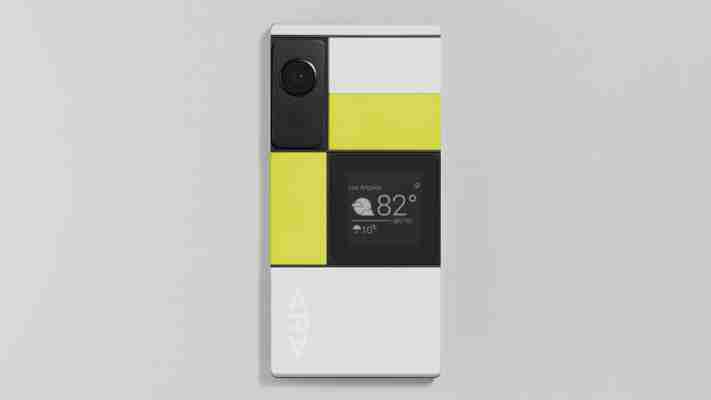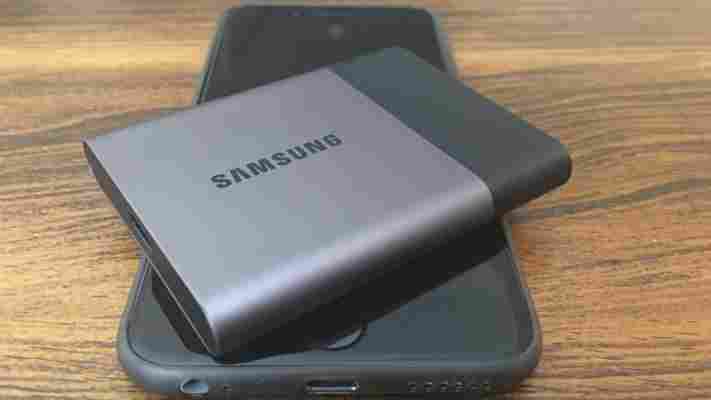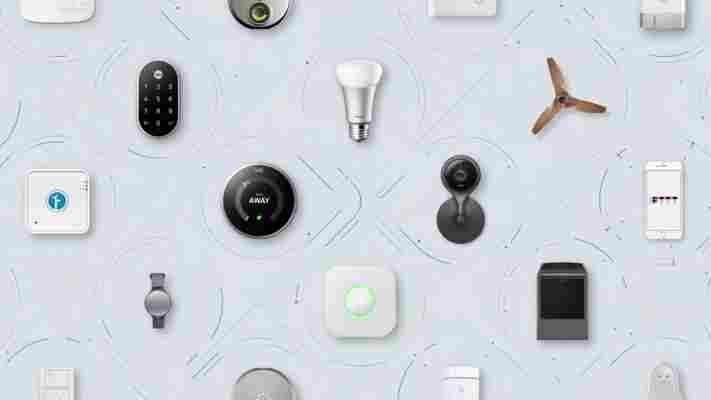Google is killing Project Ara , it’s modular smartphone concept that aimed to let you ‘upgrade’ your phone piece by piece.

In theory, it sounds pretty amazing. In practice, it would have been terrible.
As-is, the smartphone upgrade process typically involves buying an entirely new phone every year or two, which has a slew of new components both inside and out.
That means that every so often, we’re out $500-800. It’s a big spend, and the idea of dropping $100 for a new camera module seemed so right by comparison.
But it isn’t, because it’s not that simple.
It’s a slippery slope. You might want to upgrade your camera, but what components does that camera need? If your 1GB RAM isn’t enough to power your badass new camera on top of everything else your phone has, that’s another upgrade.
Does the screen display your images in their full glory? No? Welp, there’s another upgrade for you!
Rather than drop $650 on a phone, you’d be pulling teeth to figure out which of your $400 in add-ons work together, if they even will.
Credit: Google
Even if your components all work in harmony, it might be on dated software. Qualcomm’s Snapdragon 800 and 801 SoCs aren’t getting Android Nougat because it refuses to support them. That’s a big problem.
It’s an issue that is potentially compounded by Ara-style add-ons, too. If Qualcomm is rage-quitting Android Nougat on devices that have it packed in, why would it ever consider supporting standalone modules?
More to the point, Ars Technica reports Qualcomm is simply passing the buck to the OEMs that are using Snapdragon. That’s not really a possibility with modular smartphones.
Sadly, Ara is typical of Google. It gets a room full of developers all lathered up about a new toy, then just kind of pulls it away from them. Please see the Nexus Q and Google Glass — both equally as auspicious and ill-conceived as Ara.
And like Glass, I never expected Ara to actually catch on. It was a neat idea, but became clear at I/O 2015 that it wasn’t scaling properly. The unit barely turned on — which is cool, but Google needed Ara to be much further along than it was.
The company will tell you its skunkworks divisions (X and ATAP) are built for failure, and that’s all true. It’s also acceptable until Wall Street comes knocking; we’ll keep in mind that these sudden downturns, like Ara and Fiber, are coming after Google’s surprising bad quarter earlier this year.
And like Qualcomm, Google is passing the buck. From the original report, via Reuters :
LG just tried to do modular, and the reception was luke-warm. Nobody really cares, because even with a product as polished as LG’s, modular smartphones are not easy. Those who’ve tried the phone out say pieces don’t fit right, and components are expensive and stupid — everything they forgot when it came to Ara.
And that made Ara a nightmare. Even if the stars aligned, and Google could get a product to market with support from all sorts of third-parties, the end result is a confusing mess.
The people who actually use smartphones won’t want to swap out fussy little magnetic add-ons to take a nicer picture or play a cool game.
Users want a phone that works as designed, has solid software that’s updated on time and keeps them connected to the rest of the world. Ara was never going to be what those users want anyway.
Samsung T3 SSD review: A glass ceiling on cloud storage
SSD is the future, but it’s an expensive purchase to make it today’s world. But prices are dropping, and external drives with deep storage are fast becoming something we all want on our desktops or in a travel bag.

Samsung’s T3 SSD lineup is perhaps the best known of the bunch. We put the 2TB USB-C offering through its paces, comparing it to cloud storage as well as spinning drives.
The first thing that jumps out is how tight the package on this 2TB model is. Compared to the Porsche Design drive I recently tested , it’s downright dwarfish.
That size is possible because SSD has no moving parts; it doesn’t need to spin, and creates very little heat while operating. Every bit of this drive is storage.
While it’s nowhere near as pretty as the Porsche Design drive, the size more than makes up for that.
Speed kills, and the T3 simply murders anything comparable.
It’s roughly twice as fas as the spinning Porsche drive, and typically about five times as fast as cloud storage on a Wi-Fi connection hovering around 15Mbps for uploads.
Those gains are for simpler transfers — something most users will run into, like moving 10-20 files around at a time. When you start moving huge folders, the T3 shines.
I cached my entire Google Drive (about 50GB data) to shuffle it around from my computer’s hard drive to an external source. The T3 completed the transfer in about 45 seconds.
The Porsche drive took about five minutes (not bad), and cloud storage took roughly 10 minutes (I tested with iCloud and Google Drive).
I tested the 2TB T3 with a 2013 MacBook Pro and 2016 MacBook . The drive comes with a USB to USB-C cable, which is adequate for file transfer.
If you want to use it with a MacBook, Apple’s included cable won’t help you much. It’s not meant for high speed file transfers. I purchased an Aukey USB-C cable for about $12 on Amazon, and that fixed the speed issues I was having with Apple’s cable.
For the price, Aukey’s nylon-wrapped cable is a worthwhile upgrade from Apple’s standard white offering — especially if you want to use any sort of external drive like the T3.
For 2TB, you’ll pay about $730 for the T3. That’s a lot of cash.
The Porsche drive will run you $160, and it’s easy to find similar drives even cheaper.
Spinning drives are seeing the end of days for consumers. The upside is that if they fail, data recovery is typically much easier than it is with SSDs.
And the argument for cloud storage data safety trumps both arguments.
The trouble with the cloud is that it typically requires a subscription unless you want to keep data spread out all over the Web by using the 5 to 15GB free tiers available just about everywhere.
For consumers, 1TB is likely enough storage — and the best price you’ll find from a reputable provider like Google or Apple is $10 per month.
Apple tops out at 1TB. Google scales up to 10TB, and the pricing matches that scale at $100 per month.
Tucking information into the cloud is almost inarguably the easiest method, but if you plan on having a large backup for a few years or more, finding a good external drive is probably more cost effective.
I was using iCloud to store files I accessed across multiple desktops, and it was getting bulky — handy, but crowded. In offloading much of the larger files and stuff that I wasn’t going to access any time soon onto the T3, I was able to reduce how much I spent on cloud storage.
For desktop users, I’d say the T3 is a no-brainer. It’s fast, transfers a ton of files quickly (with the right cable) and is highly portable. It’s also worth the spend if your new MacBook came with a small amount of internal storage.
It doesn’t replace the cloud for every purpose, though. As a macOS and iOS user, Photos and Notes are two apps I rely on — and both need iCloud. I can’t get away from spending a few bucks monthly on iCloud for that reason, but I can put a glass ceiling on my spending by managing my data every few months.
I don’t need to keep large Xcode builds or wireframes for apps in the cloud, and storing legacy personal files I won’t access makes no sense for the cloud, either.
And with the 2016 MacBook Pro likely carrying USB-C, cables matter — and finding a good USB-C to micro USB-3 (the standard most modern external drives use) cable won’t be easy.
I like the T3’s portability, which was a big reason I began using it to better manage my cloud storage. I often take my MacBook and work remotely, but don’t want to carry around a large spinning drive in the off chance I’ll need a file. The SSD fits in a pocket.
It’s spendy, and that’s maybe it’s only downside. As time goes on, SSD pricing will drop, but I still prefer accessing files on the T3 to any other method so it’ll stay in my bag (and on my desk).
Nest opens up Weave protocol to other developers and releases Cam API
Nest today announced several updates for its third-party ‘Works with Nest’ program aimed at giving developers more options for communicating with Nest products.

First up, the company is opening up its proprietary Weave communications protocol. The technology was previously only used in Nest products, but developers can now use it to connect power-constrained devices with low latency and connection redundancies, without the need for Wi-Fi.
Nest says Weave has a several advantages over other device-to-device standards for the smarthome:
Reliability – Nest Weave delivers reliable messaging across multiple networks. And because it runs over Thread , it can work with a secure, self-healing mesh network. So even if one device crashes or Wi-Fi goes down, other devices on the network will keep working. This is especially important for safety and security products, like smoke alarms or security systems.
Latency – Nobody wants lag time when switching on the lights or unlocking the door. Nest Weave allows devices to talk directly to other devices so they can interact with end-to-end latencies of less than 100ms, even over a large mesh network.
Range – When Nest Weave runs over Thread, each powered device acts as a wireless extender to route information. That’s critical when Wi-Fi doesn’t reach every corner of the house.
Power and size – The Nest Weave communications protocol is compact and runs on single MCU devices with as little as 64KB of RAM. And a device using Thread and Weave can run on a single battery for many years. This solves many problems for small, low-powered products.
Security – Rather than rely on only network security, Nest Weave provides its own, independent, end-to-end application layer security. The Nest Weave security stack also has application-specific encryption keys, so a hacker can’t unlock the front door by compromising the patio lights.
Simple setup – Pairing connected devices can be tricky. Nest Weave lets people get connected right from their smartphones using the Nest app.
And it already has several third parties lined up for Weave support, including Phillips Hue, WeMo, General Electric, iHome, Tyco and more. It also says Google’s OnHub will work with Weave soon, and that companies like Qualcomm will provide Weave kits to help Nest developers get started.
In the meantime, the first Weave product is a door lock by Yale called Linus. It connects to your smartphone via Weave so that you can use the Nest app to check whether your door is open or closed, set up different passcodes for different degrees of access, and monitor when someone leaves or enters the house. You can do this on the go, so you don’t have to worry about whether you left your apartment unlocked, or you can unlock it incase you need a friend to pick something up for you.
If you’re wondering about the difference from Google’s Weave, Nest tells us that Google’s Weave is meant to cover a more broad set of devices in the IoT space, while Nests’ is aimed at their own products and connectivity in the home. That said, the companies are working together to ensure that products will work across both platforms.
Meanwhile, the company has finally released an API for its cloud-connected Nest Cam, allowing developers to trigger different camera actions and connect it with their apps. For example, Phillips Hue light will be able to turn on automatically when the Nest Cam detects motion, and the Mimo baby monitor can set the camera to record a clip whenever the baby stirs.
For more on today’s updates, or if you’re interested on working with a Nest integration yourself, it’s worth reading though Nest’s blog post here .
➤ New ways to work with Nest [Nest]
